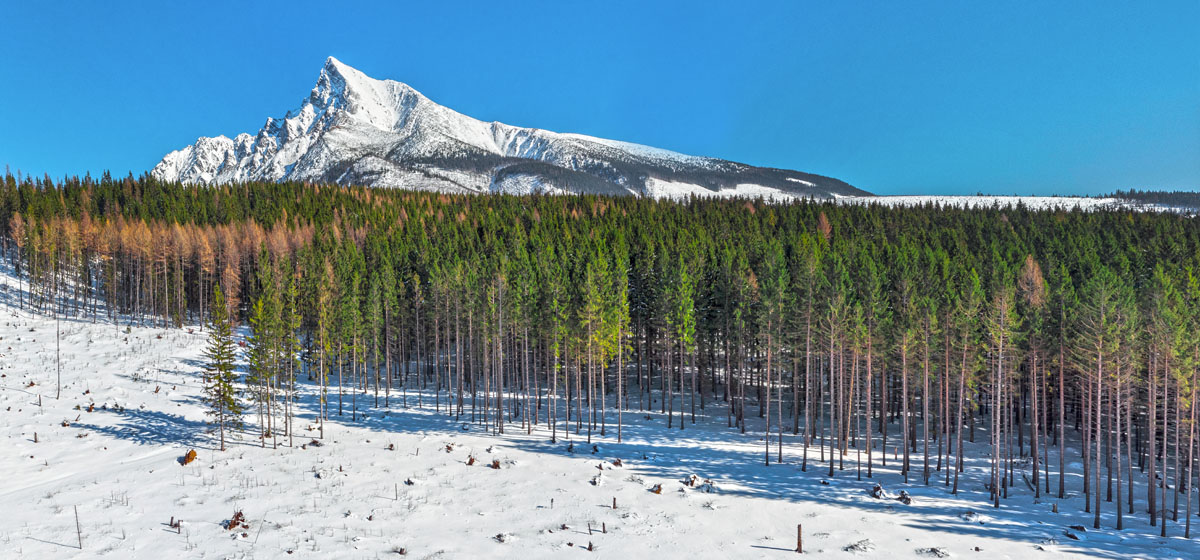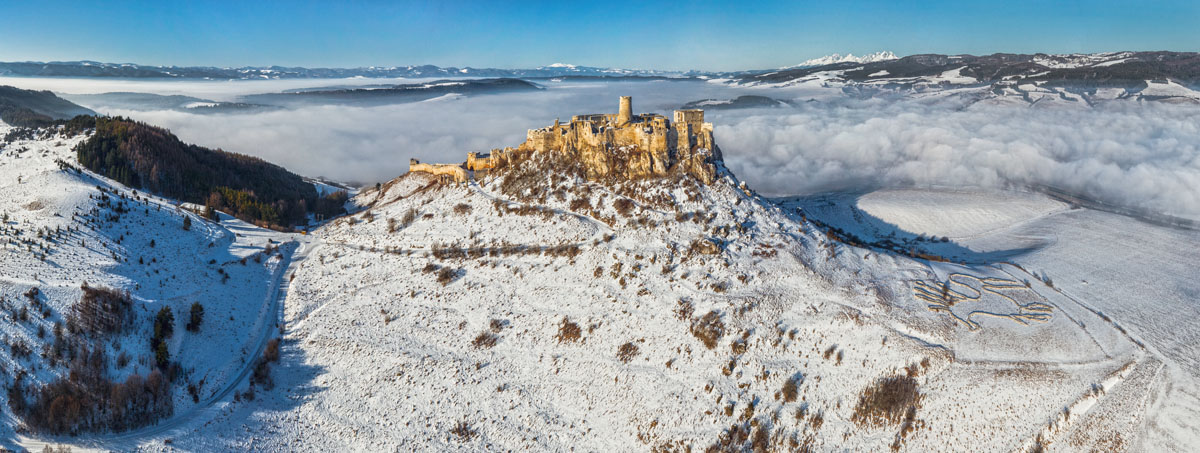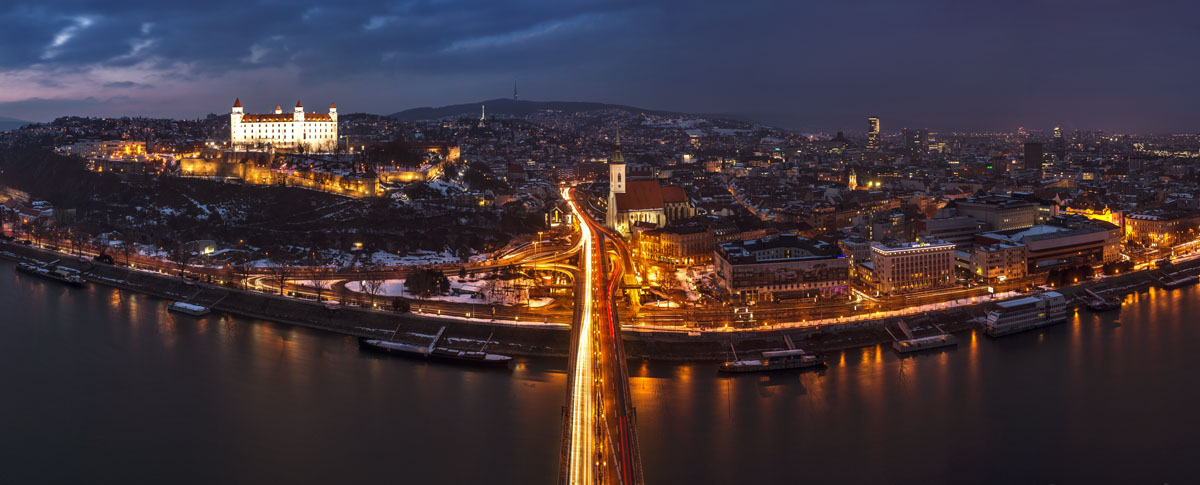Short History
The history of Slovakia as a Central European country is composed of multiple layers of civilization.
The historically first documented ethnic group was the Celts (5th – 1st century BC). The largest Celtic oppidum (settlement) on the territory of today`s Slovakia was on the site of modern-day Bratislava. During the first half of the 1st century BC silver coins bearing the inscriptions of important people, for example, Biatec, were minted here.
From the first half of the 1st century to the beginning of the 5th century the Germanic tribe Quadi inhabited present-day Slovakia, in close proximity to the Roman Empire. Carnuntum, the capital of the Pannonia province was not far from Bratislava on the territory of today`s Austria. At its most flourishing period it had as many as 50 000 inhabitants and from the beginning of the 2nd century for the next three centuries the Roman XIVth legion Gemina was positioned here to protect the Roman borders against Germanic invasion.
The fortifications and military camps located on the territory of Slovakia, Gerulata near Rusovce, Devín and Iža near Komárno formed part of Roman border protection (Limes Romanus).
Between 172-180 battles which formed part of the Marcommanic Wars between the Roman Empire and the Germanic Marcommani tribes and the Quadis, took place on the territory of present-day Slovakia. An inscription on a rock near the town Trenčín (Laugaricio) about soldiers from the IInd Roman legion Italica who made their winter camp here (179/180) dates back to this period.
The Roman Emperor and Stoic philosopher Marcus Aurelius, who led wars against the Germanic peoples, wrote the first part of his famous work, Meditations to himself, during battles along the Hron River.

Kriváň in High Tatras. Photo: Filip Kulisev, Master QEP, FBIPP
Slavs and the Kingdom of Hungary
Slavs started to settle in the territory of Slovakia at the turn of the 5th and 6th centuries as a result of a great migration of nations. Between 623-658 the first Slavic state entity in Central Europe, known as Samo`s Empire, with a section of its presumed territory extending onto the territory of Slovakia, was formed.
By joining the later state entity, Pribina`s Principality of Nitra, withMojmír`s Principality of Moravia, the important Early Medieval state known as Great Moravia or the Great Moravian Empire originated in 833. It was formed by Prince Mojmír I, Rastislav and its greatest territorial expansion and power was reached under the rule of Svätopluk. The centre of this Empire was comprised of the territory of today`s Moravia, Slovakia and northern Hungary.
At the request of Prince Rastislav, the Byzantine Emperor sent the missionaries Cyril and Methodius to Great Moravia in 863. Their arrival meant significant cultural development, they created the Glagolitic alphabet and translated liturgical and Biblical texts into the Old Church Slavonic language which became the recognized language of worship. After Svätopluk`s death, the Empire fell into decline, culminating with the invasion of Magyar tribes and in about 907 Great Moravia ceased to exist.
In 955 Magyar warriors, after their defeat by the German Emperor Oto I at the Lech River, surrendered and permanently settled in the Carpathian Basin. In the year 1000, with the coronation of Stefan I as King, the Kingdom of Hungary originated. In his battle for the throne, King Stefan himself was helped by two great men of Slavic origin, Hont and Poznan.
Bratislava as temporary capital city
The ruling Arpád family followed the tradition of Great Moravia and created a Nitra Appanage Duchy in the territory of Slovakia. This Duchy was for the most part governed by the future Hungarian king, had its own army and minted coins. The territory of Slovakia became part of the Kingdom of Hungary until its collapse in1918.
Slovak territory did not escape the destructive Tatar invasion of 1241. After this disaster King Bela IV invited settlers from abroad to the country and granted privileges also to Slovak towns.
At the end of Arpád rule many aristocratic families possessed extensive properties, controlled the highest court authorities and conducted politics independently from the Hungarian king. Eastern Slovakia was ruled by the Omodejs and southwestern Slovakia by Matúš Čák Trenčiansky, called the Master of the Váh and Tatras. Anarchy reigned in the country, culminating after the dying out of the Arpáds in 1301. The situation was finally consolidated by Charles Robert of Anjou, who defeated the rebellious nobles.
During the reign of the Anjous new deposits of precious metals were found in our territory. Thanks to deposits in Kremnica and Banská Štiavnica, Slovakia became the gold mine of the Kingdom of Hungary. In Kremnica gold florins and silver pennies were minted, among the most sought-after currencies in Europe.
During the reign of Sigismund of Luxemburg, who was later crowned as Emperor and Czech King, major reconstruction of the Bratislava Castle took place. Sigismund was faced with the threatening Turks and the Hussite movement. King Matej Huňady, known as Corvinus, decided to establish the first university during his reign. He chose Bratislava, the city on the Danube, as his seat. This fact was reflected in the choice of name for the first university in Slovakia - Academia Istropolitana. Scholars who were recognized throughout Europe worked here.
The importance of Bratislava and Slovakia significantly increased after the defeat of Hungarian armies at the Battle of Mohács in 1526. As a result of the permanent threat of Turkish invasion Bratislava became the temporary capital city of the Kingdom of Hungary and at the same time its legislative centre and coronation city in 1536. The territory of Slovakia thus became the centre of Hungary for more than 150 years. From 1563 until 1830 the Habsburgs were crowned as Hungarian kings and queens in St. Martin`s Cathedral, among them Maximilian I, Rudolf II and Maria Theresa.
Bratislava flourished during the rule of Maria Theresa, with the regulation of the Danube and construction in the city. In the 18th century Bratislava was the largest and most populated city in Hungary. The Castle became the royal residence. The crown jewels were kept in the Crown Tower. The Hungarian Diet convened in the city until 1848.
The 18th century can be marked as the golden age of mining. Gold, silver and copper was mined and exported abroad. In 1770 the first university in the world, the Banská akadémia, specialising in mining, was established in Banská Štiavnica. Thanks to Maria Theresa`seducational reforms, literacy and national awareness among Slovaks grew.

Spišský hrad from 11th - 12th century. Photo: Filip Kulisev, Master QEP, FBIPP
Standard Slovak language
The establishment of a modern Slovak nation began with the emergence of the Catholic priest, Anton Bernolák, who was the first to codify the standard Slovak language, using the western Slovak vernacular from the Trnava area as its base. The Bernolák movement possessed a strong edifying element mainly thanks to the actions of Juraj Fándly, who focused his attention on solving practical problems related to the everyday life of the peasantry. Bernolák`s codification of Slovak did, however, not catch on and survived only among a small group of Catholic priests.
The appearance of Ľudovít Štúr, professor at the Bratislava Lutheran Lyceum, member of the Hungarian Diet, journalist and politician was more successful. He supported his intention of language codification by publishing the first Slovak politically oriented newspaper, Slovenské národne noviny (the Slovak National Newspaper).
He managed to get a group of his own students together who became ardent supporters and advocates of Štúr`s Slovak language. It was based on the language used by thanes in Liptov, Orava and the Zvolen county, as a result of which Štúr was able to attract a section of the up-to-then ethnic Slovak aristocracy on his side. Štúr`s project met with success also thanks to the fact that he managed to overcome the confessional antagonismsbetween Slovak Catholics and Lutherans.
Štúr came to the fore together with Jozef Hurban and Michal Hodža during the revolution of 1848 -1849 in an armed uprising against the repression of the Slovak nation when the Hungarian government ignored the demand of Slovaks in the areas of education, culture and self-government.
The first Slovak National Council (SNR) was established in Myjava on 19 September 1848 as the highest political organ of the Slovak emancipation and revolutionary movement. This movement culminated in the second half of the 19th century by the establishment of Matica slovenská (Slovak foundation) in Martin (1863). Hereby a cultural, political and educational institute originated which united nearly all representatives of the Slovak emancipation movement. Its existence was, however, abolished by the Hungarian government in 1875. The activities of Matica slovenská were renewed after the collapse of the Austro-Hungarian Empire and the creation of Czechoslovakia.
Totalitarianism and Velvet Revolution
The end of the First World War meant a new beginning for all nations in Central Europe. Thanks to the disintegration of the Austro-Hungarian monarchy and the defeat of Germany, Poles, Lithuanians, Estonians, Latvians, Croatians, Serbs, Slovenians, Albanians, Czechs and Slovaks gained their freedom.
The adoption of the Martin Declaration on 30 October 1918 was a historical milestone where representatives of all political parties agreed on the unification of Slovakia and the Czechs. Slovaks hereby expressed their agreement with the creation of the Czechoslovak Republic. This was preceded by systematic political activity of Slovaks and Czechs abroad. Profesor Tomáš Garrigue Masaryk, General Milan Rastislav Štefánik and Dr. Edvard Beneš played a decisive role in the creation of the independent state.
Separation from the Austro-Hungarian Empire and the period of the First Czechoslovak Republic brought Slovaks development in all spheres of life:economic, educational, cultural as well as presentation of Slovakia abroad. Czechoslovakia was one of the first countries in the world to introduce general and confidential voting rights regardless of gender or property, an eight-hour working day, social security for workers and the protection of rights of national minorities.During its 20-year existence, the nation-forming process of Slovaks was completed, resulting in an own education system, political parties and cultural institutes.
The first step towards an independent Slovakia was a Movement for Autonomy which saw the culmination of its efforts in October 1938 with its enactment. A more pronounced shift came on 14 March 1939 when, under pressure from the Nazi leader Adolf Hitler, a Slovak State was declared, officially renamed the Slovak Republic in July of the same year.For the entire duration of the World War II its leaders stood on the side of the aggressive policies of Nazi Germany and agreed with the deportation of 70 000 Jewish fellow citizens from the territoryof what was then Slovakia to concentration camps.
On 29 August 1944 united anti-fascist forces in Banská Bystrica announced the Slovak National Uprising, by which Slovaks joined the worldwide anti-fascist coalition. The extent of the Uprising made it one of the largest during the Second World War. Soldiers and partisan units managed to resist German forces against the odds until the end of October 1944 when, for tactical reasons, they had to retreat to the mountains. The political aim of the Uprising was the re-establishment of a democratic Czechoslovakia. These plans were, however, thwarted by the Communist coup in February 1948, installing forty years of Communist dictatorship.
The process of revival brought great hopes, culminating in the election of Alexander Dubček as First Secretary of the Central Committee of the Communist Party of Czechoslovakia . This process was interrupted by the violent invasion of Warsaw Pact troops in August 1968. Despite this, a federation and two republics were formed. The federation was signed at the Bratislava Castle on 30 October 1968.
After the Velvet Revolution in 1989, organized by local dissident groups, a period of freedom and democracy followed in Czechoslovakia. However, disputes about the form of state governance and the competence of federal governments resulted in the division of the unified Czech and Slovak states into two independent nations, the Czech Republic and the Slovak Republic on 1 January 1993.
Since 19 January 1993 Slovakia has been a member of the UN, since 29 March 2004 a member of NATO and since 1 May 2004 a member of the European Union.

Bratislava, view from the Bridge of the Slovak National Uprising. Photo: Filip Kulisev, Master QEP, FBIPP
| Facts about Slovakia |
|---|
| Official name: Slovak Republic |
| Establishment of the Slovak Republic: 1. 1. 1993 |
| Official language: Slovak |
| Currency: Euro since 2009 |
| Political system: Parliamentary democracy (150 members of parliament elected for 4 years) |
| Constitutional system: Constitutional and legislative power (National Council), executive power (President and Government), judiciary (Constitutional Court and courts) |
| President of the Republic: Peter Pellegrini |
| Deputy Speaker of Parliament: Peter Žiga |
| Prime Minister: Robert Fico |
| State symbols: coat of arms, flag, seal and hymna „Nad Tatrou sa blýska“ |
| Membership in international organizations: EU, NATO, UN, OECD, OSCE, INTERPOL etc. |
| Capital City: Bratislava |
| Regional cities: Bratislava, Trnava, Nitra, Trenčín, Žilina, Banská Bystrica, Prešov, Košice |
| Total area: 49 034 km2 |
| Population: 5 400 000 |
| Population density: 111,1/km2 |
| Neighbouring countries: Czech Republic, Hungary, Austria, Poland, Ukraine |
| Ethnic composition: Slovak (80,7 %), Hungarian (8,5 %), Roma (2,0 %), Czech (0,6 %), Rusyn, Ukrainian, Russian, German, Polish and others (less than 2 %) |
| Religions: Roman Catholic (62 %), Protestant (5,9 %), Greek Catholic (3,8 %), Reformed Christian (1,8 %), undenominational (13,4 %) |
| Height above sea level: 95 mamsl (Bodrog River) - 2 655 mamsl (Gerlach Peak) |
| The largest of 170 castles and manor houses: Spišský Hrad |
| Oldest ice cave in Europe: Dobšinská ľadová jaskyňa |
| Longest Slovak river: Váh |
| Largest river Island in Europe: Žitný ostrov in southern Slovakia, 132 612 ha |
| Largest natural park: Národný park Nízke Tatry, 81 000 ha |
| Longest protected plant in Slovakia: Edelweiss |
| Largest and deepest lake: Veľké Hincovo pleso - 20,1 ha, depth 53 m |
| Largest wooden altar in the world: Levoča – St. Jacob`s Church, artist Majster Pavol from Levoča, beginning of 16th century, height 18,6 m and width 6,3 m |
